|
|
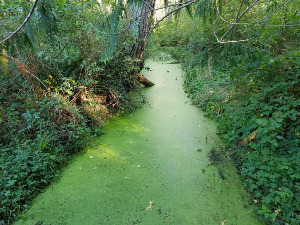
by Moises A. Hernandez, age 17
About ten years ago, a bloom of cyanobacteria appeared in Lake Superior. Since that time, scientists have searched for answers as to why this problem occurs in this specific lake.
Lake Superior—bordered by Canada, Minnesota, Wisconsin, and Michigan—holds one-tenth of our planet’s surface freshwater. The largest of the Great Lakes of North America, Lake Superior is also the world's largest freshwater lake by surface area and third largest by volume.
Cyanobacteria, also known as Cyanophyta, are blue-green algae that can use up oxygen and block light, harming organisms trapped underwater. Due to their short life, however, the few blooms that do occur in Lake Superior are typically small. Samples and good data are limited.
[read more]
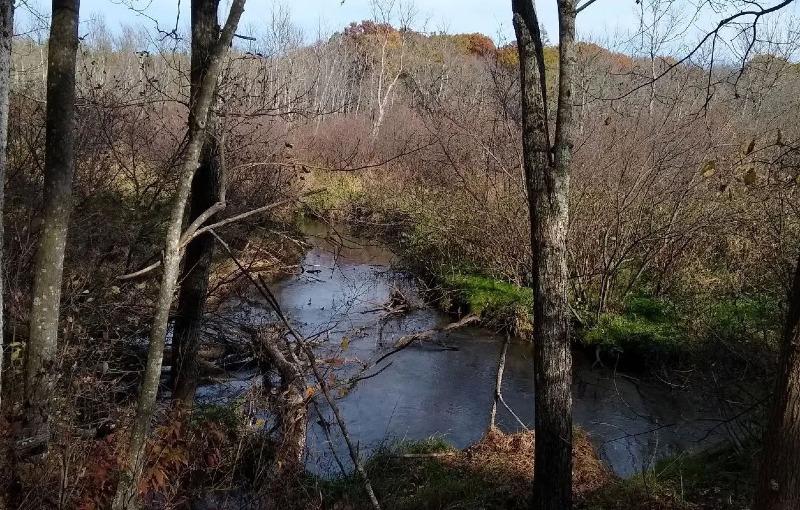
by Dyami Rodriguez, age 17
Buying land is a major factor in protecting the environment. To that end, the Groundswell Conservancy, along with other conservation groups, recently made a major purchase with the intent of protecting Wisconsin's environment.
The Conservancy bought 40 acres of Dell Creek wildlife area located in Sauk County that showcases 1,850 feet of the land's beauty, containing a rich variety of plant and animal wildlife as well as a popular trout stream. The neighboring land is full of wetlands and forests, including many different types of oak trees.
The Groundswell Conservancy had many partners in their acquisition project, including Knowles-Nelson Stewardship Program, Norm Anderson Conservancy, Aldo Leopold Chapter Trout Unlimited, Badger Fly Fishers, Southern Wisconsin Chapter Trout Unlimited, and the Watershed Access Fund of the Wisconsin State Council of Trout Unlimited.
[read more]
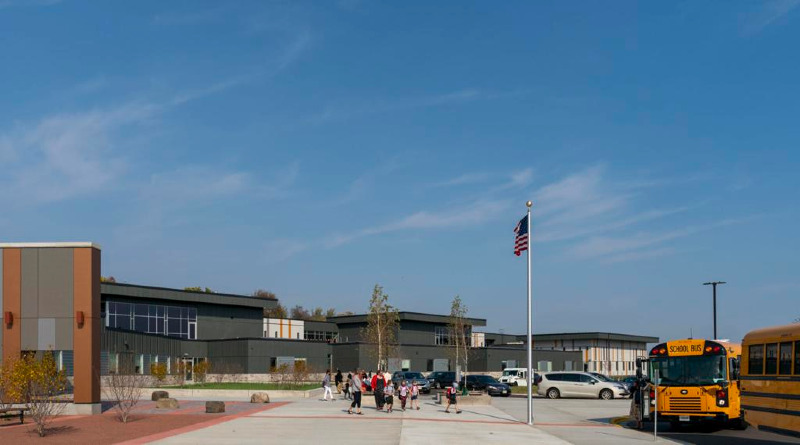
by Devika Pal, age 16
Forest Edge Elementary School in Fitchburg is the first Net Zero Energy school in Wisconsin.
The school opened in September of 2021, and is part of the Oregon School district. The district’s Superintendent Dr. Leslie Bergstrom said the school’s goal is to create “the best design for student learning that also incorporated technologies to efficiently use and conserve energy.”
The school has implemented innovative features such as an electrochromic glass that tints exterior windows to gain natural sunlight; geothermal wells that heat and cool the school efficiently, and therefore reduce the amount of energy used. The school also has a 125kW battery that produces and stores excess energy, which can then be sold back to utilities and can be added to a grid. The building does not use any natural gas.
[read more]
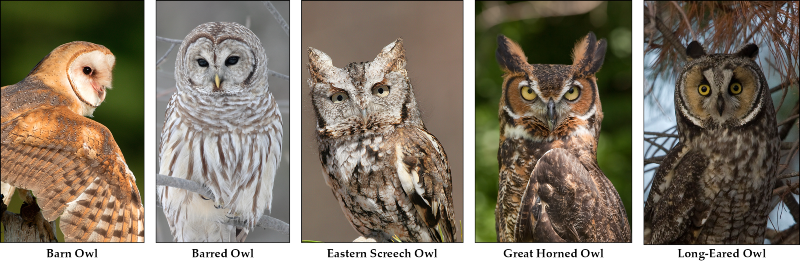
by Ayelen Flores Ruiz, age 12
Not only are owls pretty to look at but they are important to the environment. Wisconsin is lucky to have just the right climate and pool of available prey to attract these fascinating creatures.
There are five species of owls that call Wisconsin home: barn, eastern-screech, barred, long-eared, and great-horned owls. Other types of owls often migrate to the Wisconsin from Canada.
Owls are hunters and meat-eaters. They play an important role in keeping the predator-prey relationship in balance. Owls help control the population of disease-carrying rodents and small mammals. This is vitally important in both urban and rural areas where rodents can flourish.
[read more]
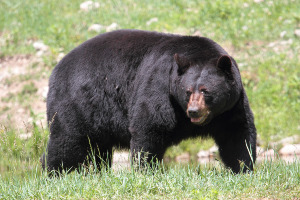
by Dayanara Flores Gonzalez, age 14
It is getting easier to see black bears in Wisconsin. It’s becoming more common to see black bears because their numbers in Wisconsin are growing. So, if you decide to go camping in our state, it's possible you could see a black bear roaming around.
In 1989, the estimated number of black bears in Wisconsin was close to 9,000. A recent report shows that the black bear population has more than doubled to 24,000 in the 30-year span since then.
One reason black bears are becoming more common is that it's easier for them to find a safe habitat to live in without being in danger. Another reason is that the government is regulating the number of bears that can legally be killed.
[read more]
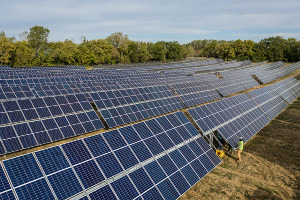
by Yani Thoronka, age 16
In November of 2020, County Executive Joe Parisi announced new efforts regarding conservation and sustainability. The goal is for Dane County-owned facilities to run solely on renewable energy.
In his proposal, Parisi spoke of converting about 90 acres of county land near Femrite Road, in Cottage Grove into a solar farm. This new solar farm is almost double the size of a solar field at the Dane County Regional Airport that opened two years ago. The energy produced by the new solar farm will become a primary source of energy for the county and offset current electrical usage. Now, nearly two years later, with the plans officially finalized for the solar farm, construction is set to begin this spring.
In addition to the financial benefit of converting to solar energy, which officials hope will create return on investment in the future, the farm will also be good for stimulating the regional economy. Furthermore, the construction of the solar farm will create local jobs, while simultaneously paving a road forward in the fight against climate change. This standard is one the county seeks to build on, through its current Climate Action Plan Dane.
[read more]
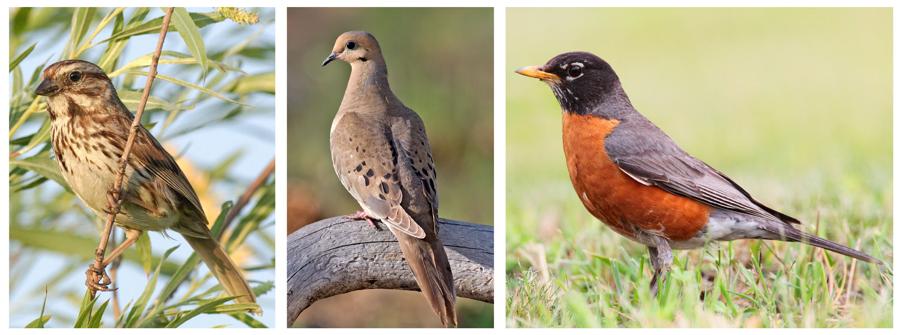
by Ruben Becerril Gonzalez, age 10
Have you heard of some of Wisconsin’s year-round birds? Today, I’m going to talk about the American Robin, Mourning Dove, and Song Sparrow.
To start, the American Robin is Wisconsin’s state bird. These birds are gray and brown on their upper body and top and have orange bellies. They have darker brown or black heads with white spots to highlight their eyes. Their beaks are yellow and their tails are medium sized. The American Robin’s size can range from 7.9 to 11 inches long and have wingspans as big as 15.8 inches. When it comes to their diet, robins are very picky! They typically like chopped apples or mealworms. Throughout the year, Robins like to live in shrubs, snow, and even woodlands!
Next is the Mourning Dove. These birds have a more rounded shape. They are mainly gray with tan wings, but their belly and breasts have specks of white and tan. Their heads have a light white color. In addition, they have sharp short beaks. Doves measure around 9.1 to 13.4 inches long and have a wingspan of 17.7 inches. These birds have long tails.
[read more]
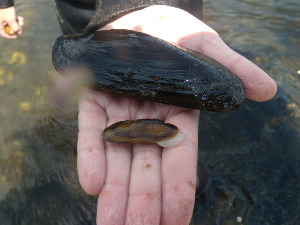
by Kelly Vazquez, age 17
In August 2021, spectaclecase mussels estimated to be over 100 years old were found by biologists working for the Wisconsin Department of Natural Resources (DNR), the University of Minnesota, and the National Park Service near the St. Croix Falls dam located in the St. Croix River. The U.S. Fish and Wildlife Service (FWS) has stated that in the past, these mussels—which can grow up to nine inches—were found in more than 44 streams across 14 states. Currently, this kind of mussels can be found in fewer than half the number of those streams in 11 states located primarily in the midwest and southeast.
Usually, the age of a mussel can be found by counting the number of growth rings on the shell. Due to the shells’ poor condition, the biologists assumed that the cluster had been there since 1907 when the river was dammed. DNR biologist Lisie Kitchel explained that the dam interrupted the spectaclecase mussels' reproductive process by preventing a fish necessary for their reproduction from traveling upstream beyond the dam.
The reproductive process begins when a fully developed female mussel releases glochidia, a larva that becomes attached to the gills or fins of a specific host fish to continue developing. The host is the key for the larvae to reach an ideal environment upstream in which they will continue their development into adult mussels.
[read more]
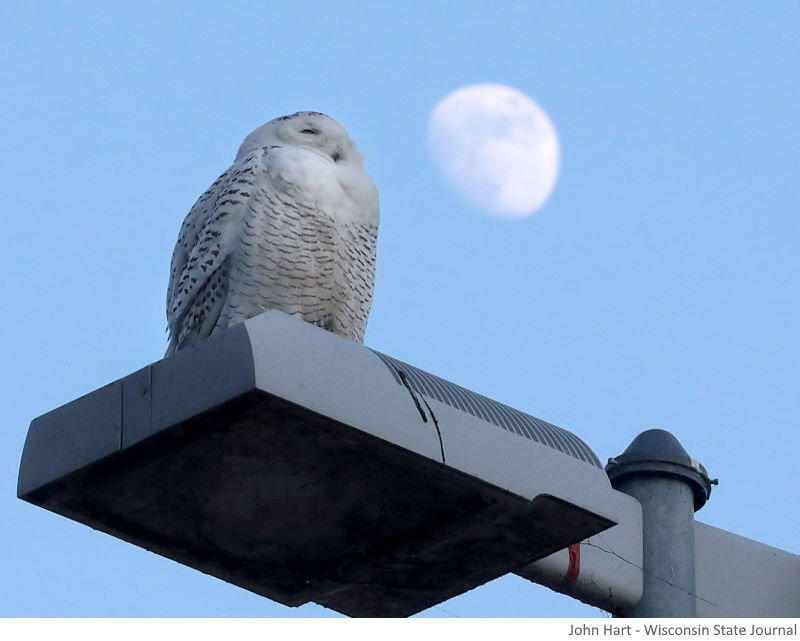
by Mariama Bah, age 15
Keep your eye to the ground and be careful when you’re walking in the Arctic Tundra, because you may find a snowy owl nesting site. Treeless, wide, hilly spaces are where snowy owls prefer to nest and hunt. purposes. These owls mainly eat small mammals, but their diet can range from rodents and rabbits to ducks and geese.
North of the Arctic Circle is home for snowy owls during most of the year. During a typical winter, small groups of owls migrate into southern Canada and northern Wisconsin. Every handful of years, however, an “interruption” occurs. During those years, large numbers of snowy owls move south as far as the southern United States. Reasons for this odd behavior are unknown.
Wisconsin is seeing its first interruption year since 2018 right now. More than 150 snowy owls have been spotted with reports coming from counties all around the state.
[read more]
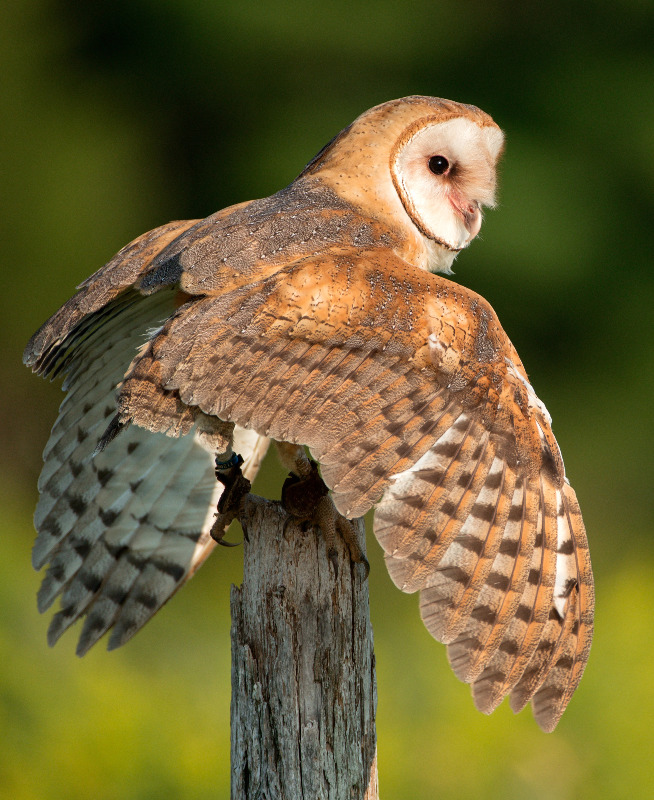
by Juanes Palma, age 9
In 2018, a unique species of barn owls were reported for the first time in over two decades in Wisconsin by The Wisconsin Department of Natural Resources (DNR). The owls were spotted in September of 2018 as a pair of these birds were found in the cavity of a dead tree. Recently, there has been an increase in barn owl sightings in Wisconsin and other near states.
These creatures usually live in the dark and are known for their white heart-shaped faces. There are about 46 different known species of barn owls around the world. Scientists have studied these barn owls through the small pellets that are coughed up after they eat their prey. These pellets contain indigestible parts of the owl’s foods such as skulls, bones, and fur. Using owl pellets, researchers have learned a lot about their diets and the ecosystems they belong to.
The chests of male and female barn owls are a distinguishing feature. Female owls have a faint red patch on their chest. The patches might reflect the female's quality of health. Females with darker red patches tend to catch fewer catch parasitic flies and have a more resistant immune system.
[read more]
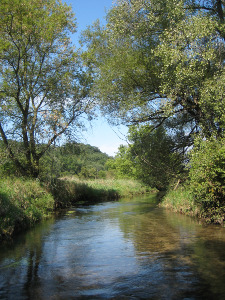
by Dayanara Flores Gonzalez, age 14
The Sugar River, also known as The Upper Sugar River Watershed, is located in Dane County and flows all the way down to the Rock River.
The Upper Sugar River Watershed Association works to protect the river from invasive species that can harm or push out native species and damage the ecosystem. Many rare and endangered native plants found in the river and its nearby wetlands are threatened. Most wetland animals depend on these native plants for food and shelter.
Some native species can disappear if a watershed loses its healthy wetlands. Recreational uses of wetlands include trapping, fishing, bird watching, and nature study. Healthy wetlands can help with keeping the water clean and safe for wildlife. Healthy wetlands also help control and prevent floods.
[read more]
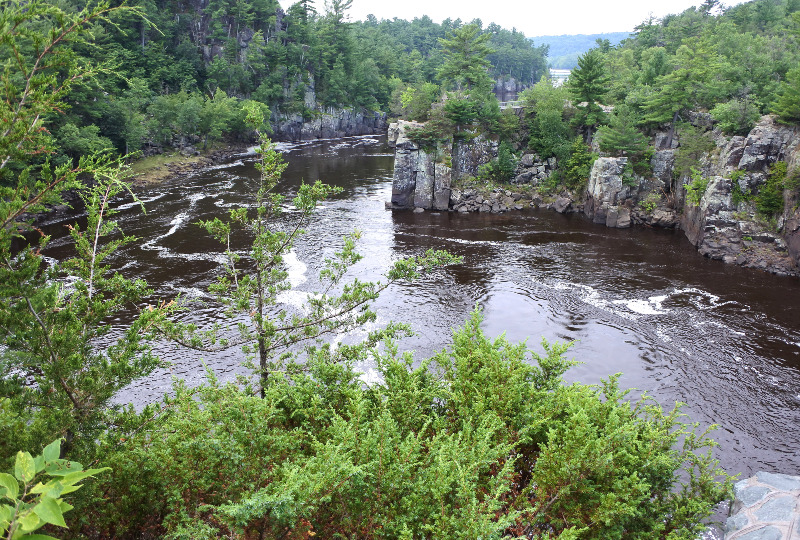
by Leilani McNeal, age 16
1.1 billion years ago, a mysterious rift, ranging from the depths of Lake Superior to present-day Iowa appeared. From the cracks of this rift, came oozing lava, hardening into a substance known as basalt. Over the next 500 million years, these natural occurrences worked in tandem with one another to support a sea of water which floored the entirety of this dark, gray material. The deposition of sand and silt from the sea led to the creation of sandstone and shale. Increased global temperatures promoted the shift of myriad glaciers across the state of Wisconsin, carving out the area’s famous potholes that are widely recognized today as the St. Croix Dalles.
As plans to build city roads using crushed rock from the Dalles emerged in the mid 1800s, general public concern rose. From a young age, George Hazzard had developed a profound appreciation for the Dalles. His work as a railroad agent further deepened his love for this area, which prompted him to organize a movement in hopes of preserving the flora and fauna of the St. Croix Dalles.
Hazzard’s preservation movement began in the late 1860s, a movement which primarily focused on ensuring the Dalles’s federal protection. Three decades later, Minnesota legislators recognized the west bank of the St. Croix Riverway as a state park. Wisconsin officials provided sufficient funding, and a section of the park was formally established in the state. Today, it is formally recognized as the First State Park.
[read more]
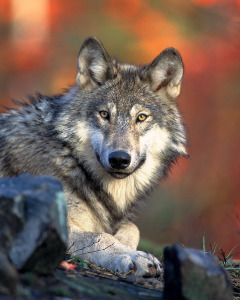
by Dyami Rodriguez, age 16
The Federal Endangered Species Act was enacted in 1973 in order to protect wildlife and plants throughout the country in danger of extinction. In Wisconsin, the gray wolf benefited from the act since it kept these animals from becoming extinct.
In the 1980s, the Wisconsin gray wolf population was estimated to be below 80 individuals. In 1999, the plan was for the wolf population to be higher than 250 outside Indian reservations in order for the species to be delisted from the endangered list. Management goals were to overall maintain a population greater than 350 outside reservations. As of April 2020, the wolf population was estimated by the DNR at more than 1,100 individuals living in multiple packs throughout the state. Recent estimates suggest it is now growing by 15-16% a year. This success primarily comes from this act and has removed gray wolves from the endangered list in 2004.
[read more]
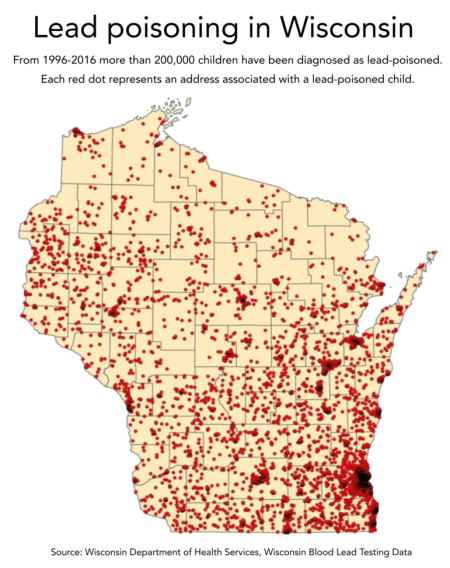
by Sydney Steidl, age 15
More than 9,000 Wisconsin children were found to have lead poisoning between 2018 and 2020, with nearly two out of three of those children from Milwaukee County.
There are many possible causes for lead exposure and eventual poisoning, including lead-based paints and lead-tainted water, soil, and dust. Lead-based pipes and paints were often used in homes built many decades ago, so it is no surprise that 90% of children with lead poisoning in Wisconsin live in homes built before 1950.
Out of Milwaukee County children tested in 2020, about 5.6% were positive for lead poisoning. Exposure to lead can impair brain and nervous system functions and result in severe learning, behavioral, and growth problems in children.
[read more]
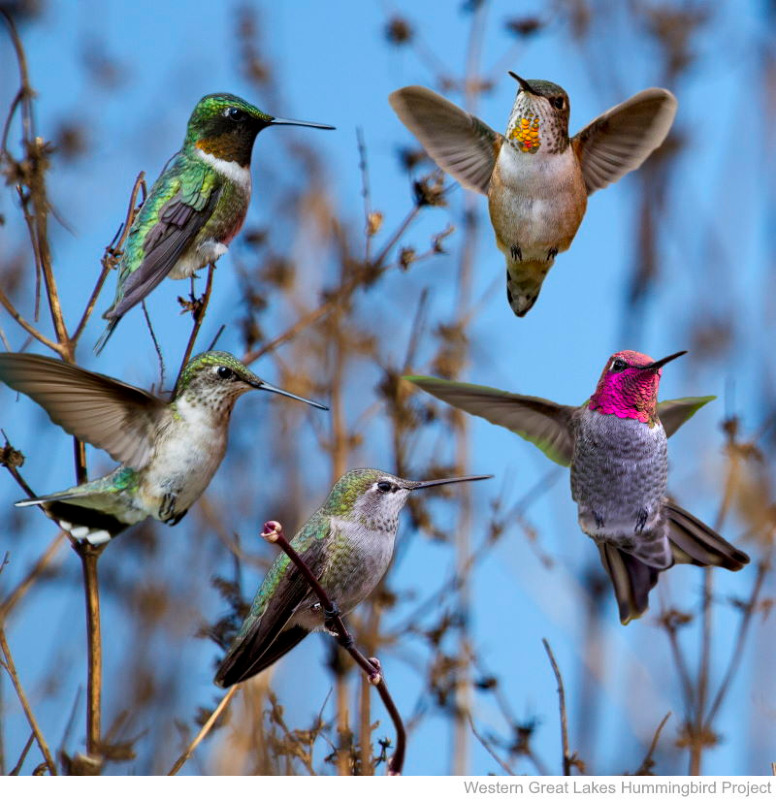
by Camila Cruz, age 14
You should consider yourself lucky if you see a hummingbird, and especially lucky if they are close enough for you to hear them.
The noise of a hummingbird comes from its wings, which move very fast. A hummingbird’s wings move about 75 times per second.
Cynthia Bridge, founder of the Western Great Lakes Hummingbird Project, is one of three hummingbird banders in Wisconsin. “They are the most incredible to experience when they hover near your head in the garden, where you can hear the humming of their wings,” she said.
[read more]
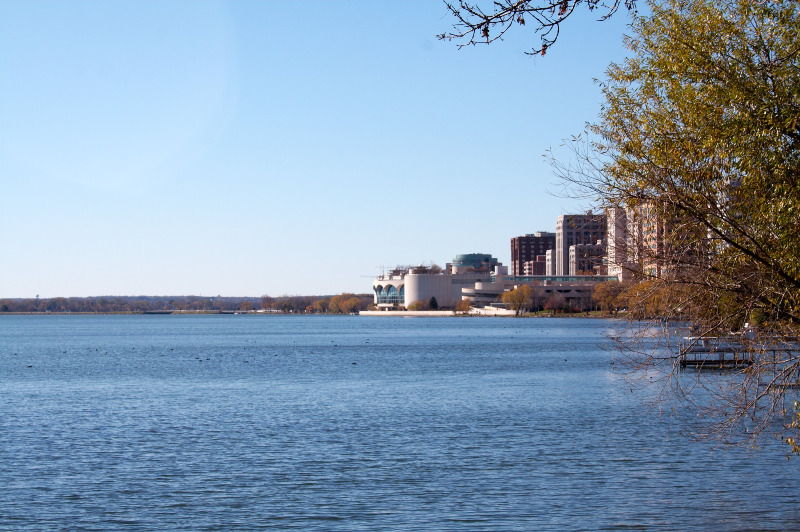
by Leilani McNeal, age 16
The Wisconsin Department of Natural Resources has placed Madison’s Lake Monona on the state’s list of polluted waters.
New studies show contamination from PFOS and other chemicals in bodies of water across Wisconsin. Lake Monona, along with both Starkweather Creek and Wingra Creek, have been added to the
list of waters contaminated
with “forever chemicals.” PFOS are part of a larger group of chemical compounds known as perfluoroalkyl substances (PFAS).
PFAS, perfluoroalkyl and polyfluoroalkyl substances, are colloquially referred to as “forever chemicals” since the compound is nearly impossible to break down. These man-made substances compromise the health of animal populations and make fish consumption unsafe, according to Wisconsin’s Department of Natural Resources (DNR). Over-exposure to PFAS has been linked to health issues such as cancer, high cholesterol, and decreased immunity.
[read more]
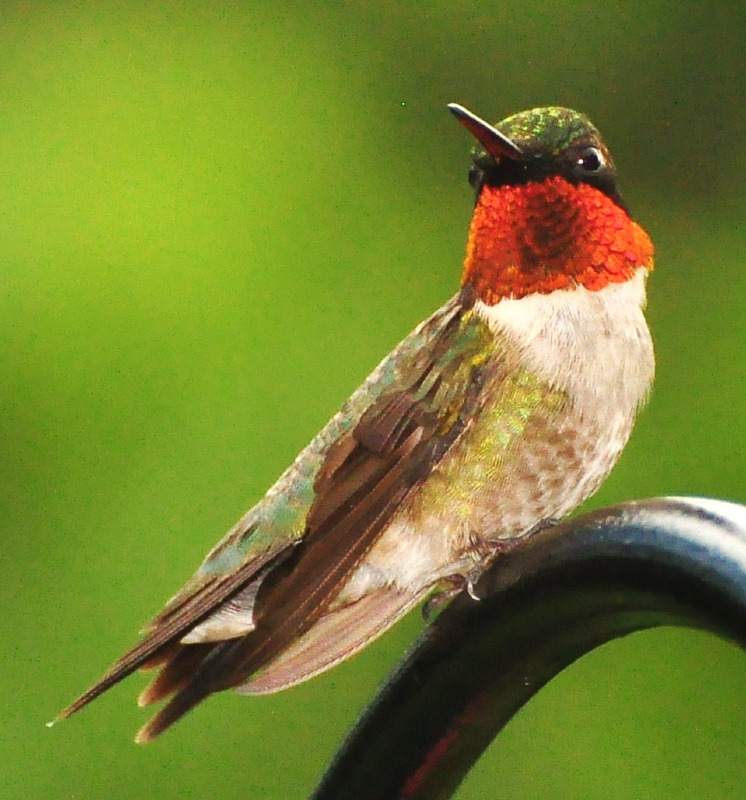
by Sofia Zapata, age 12
Have you seen any Ruby-throated Hummingbirds flying in your neighborhood recently? They are commonly seen in Wisconsin, but usually only during the warmer months. The Ruby-throated Hummingbirds are the only breeding hummingbird in eastern North America. In the bright sun, these beautiful, tiny, precision-flying birds sparkle like gems, then dart away to their next food source.
A Ruby-throated Hummingbird has fascinating attributes that make their tiny physical futures unique. Their wings flap up to 55 times a second at a relaxed pace. However, when a hummingbird increases their speed while moving forward, they flap 75 times a second. The wings of this hummingbird aren’t the only things that go at a fast pace. The tiny hearts of these birds beat 225 times per minute and can increase to 1,250 beats per minute. Compared to hummingbirds, the human heart averages from 60-100 bpm. This is to put the physical abilities of the ruby-throated hummingbirds into perspective.
[read more]


by Sydney Steidl, age 15
Over 1,200 gallons of petroleum were spilled from an underground pipeline leak near Fort Atkinson, Wisconsin, in Spring of 2019, yet regulators were not notified for nearly a year and a half.
Workers for Enbridge Energy, the company that owns the pipeline, first noticed an odd smell during a routine visit to the site on April 26, 2019. A loose joint in the pipes was found on May 4, a temporary fix was made on May 17, and the pipe was permanently fixed a few weeks later. However, the spill went unreported to the Department of Natural Resources (DNR) until July 13 of 2020, more than one year later.
When Enbridge first informed the DNR, they stated that 1.35 gallons of diluent, a petroleum material used for thinning crude oil, had leaked into the soil. This estimate proved to be greatly inaccurate, as the amount was later reported to be 1,225 to 1,386 gallons. Toxic chemicals contaminated at least 130 tons of soil, affecting about 3.5 acres of farmland about half a mile from the Rock River.
[read more]
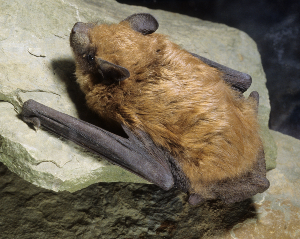
by Alan Cruz, age 16
According to research at the National Wildlife Health Center (NWHC) here in Madison, big-brown bats, a species common in North America, are immune to coronavirus infections that cause COVID-19. Although 40 other bat species in North America were not tested, the research alleviates worries that wild bats in the continent may be contaminated by humans or spread the SARS-CoV-2 virus to other species.
The virologist who was the lead author of the study, Jeff Hall, states that the research can confidently conclude "...that big brown bats are resistant to infection with the novel (coronavirus)." The big brown bat species is resistant to the virus, but it is still unknown if other species of bats, including those with a threatened population, are safe from it. There is still undergoing research concerning other North American bat species.
Previous research confirmed that the latest coronavirus originally came from horseshoe bats in China in 2019. Animals such as captive Bengal tigers, household cats, domestic dogs, lions, and many more were also discovered to have natural infection of COVID-19, including human-animal transmission.
[read more]
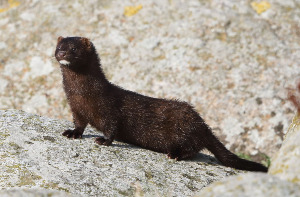
by Dyami Rodriguez, age 15
COVID-19 is not just a human problem. Recently, at a farm in Sheboygan Falls, Wisconsin, over 3,400 mink died from coronavirus in a one month period.
These deaths were confirmed beginning early October of 2020, when Wisconsin State Veterinarian Dr. Darlene Konkle reported that a couple hundred mink on the farm had died from the virus. Much like humans, the mink were immediately quarantined to try to contain the spread.
Months later they are still in quarantine and they are constantly tested to determine when it can end.
[read more]
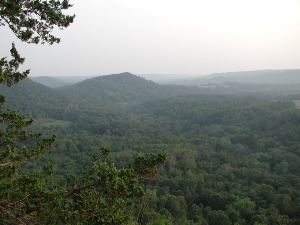
by Abigail Comerford, age 16
Climate change has been an issue for decades, and currently scientists are concerned about how it's affecting plant and animal species across the country. According to the Intergovernmental Panel on Climate Change, global temperatures are expected to rise two to four degrees in the next century, already having risen 1.5 degrees centigrade in the last century.
Jack Williams, a UW-Madison geologist and geographer claims that this is comparable to the rising of temperatures around 8,000 and 19,000 years ago when Earth came out of the last ice age. However, the difference today lies in the fact that the climate is warming at a much faster rate. As expected, this global change in temperature is threatening the lives of plants and animals everywhere.
“Climate change is happening about 10 times faster than the recovery after the ice age,” says Ryan O’Connor, conservative ecologist with the DNR on a technical advisory committee for the project. “Species just can't keep up.”
[read more]
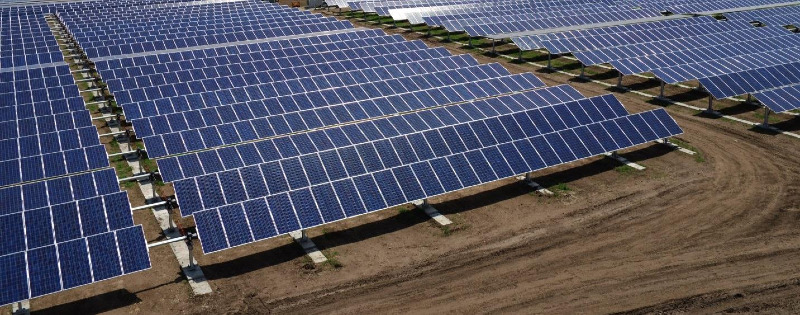
by Gabriella Shell, age 14
Madison was ranked 64th least sustainable out of 100 big cities by the American Council for an Energy-Efficient Economy. Two companies with bases in Madison, Xcel Energy and Alliant Energy, are seeking to change that ranking by investing in solar farms.
Xcel Energy is spending $100 million to develop a 1,100 acre solar plant in Pierce County, which will be the largest solar plant in the state once complete. Similarly, Alliant Energy plans on buying two solar farms which together will have 115 megawatts of capacity.
[read more]
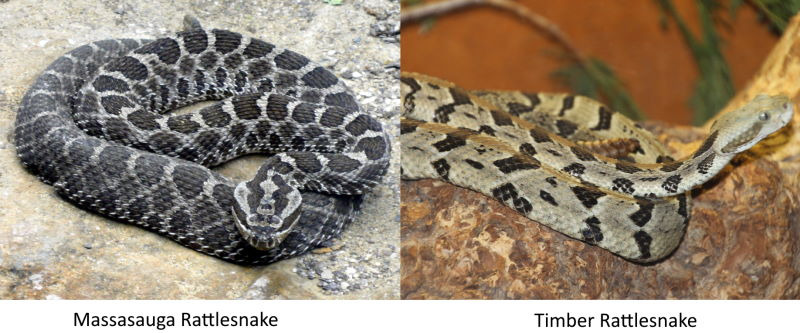
by Dyami Rodriguez, age 15
The eastern massasauga snake is native to Wisconsin and is named after the Native American term for “great river mouth.” The scientific name of the massasauga is
Sistrurus catenatus
Some of its characteristics, which set it apart from other snakes, are a blunt tail instead of a pointed one and a narrow head. The snake looks grayish-brown with dark brown or black spots. They can grow up to 15-32 inches long and live in floodplains and wetlands along medium-to-large rivers. Since they are small and similarly colored, they are sometimes confused with the fox snake or the pine snake.
The massasauga snake was thought to have gone extinct in Wisconsin. Though the snake could still be found in other states, no one had seen a single massasauga rattlesnake in Wisconsin for nearly 30 years. Now, it has been spotted five times in the last three years. One of the sightings was in Portage, Wisconsin.
[read more]
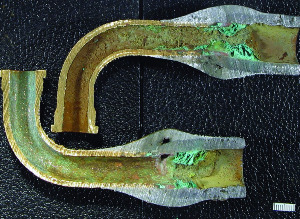
by Gabriella Shell, age 14
Almost everyone has heard of the Flint water crisis that rocked the nation back in 2016 and has continued to make national headlines since then. However, few know that Wisconsin has its own problems with water quality that it has been grappling with for decades.
As Flint continues to struggle with replacing all of their old lead pipes, Wisconsin is dealing with the same problem along with added issues of contaminants in local drinking water. With a system of unrecorded lead pipes that are extremely costly and dangerous to replace, along with decades worth of potentially harmful chemicals and nitrates leeching into the groundwater, Wisconsin’s water system is more unstable and unsafe than meets the eye.
[read more]
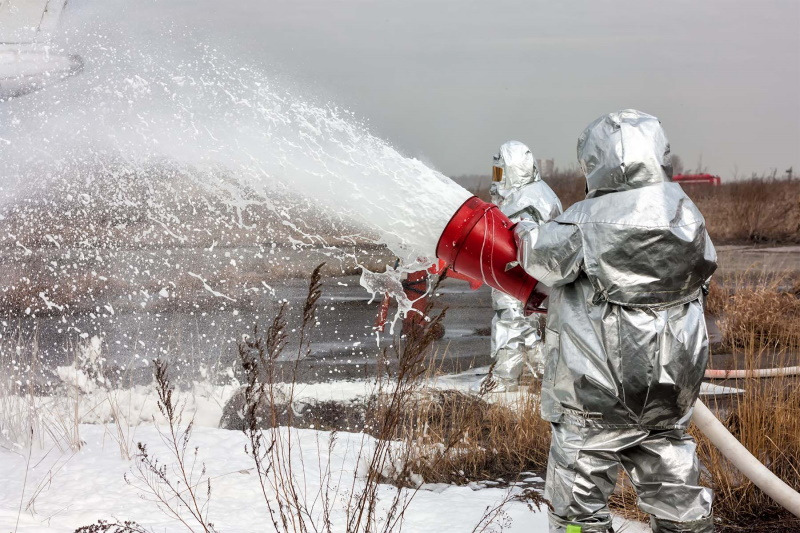
by Moises A. Hernandez, age 15
On August 31, the Wisconsin Department of Natural Resources (DNR) finalized new rules that restrict the use of firefighting foam containing substances known to cause cancer. Under these rules, such firefighting foam may only be used in an emergency. Notably, the new rules prohibit use for training, which has been a significant source of environmental contamination at sites like the Dane County Airport.
The chemicals in question, perfluoroalkyl and polyfluoroalkyl substances (PFAS) are sometimes referred to as “forever chemicals.” This is due to the fact that these substances hardly break down in the environment. Beyond their longevity, PFAS exposure can increase the risk of bodily disorders and chronic diseases like cancer. PFAS are found in firefighting foam and tools we use every day, including food packaging and non-stick cookware. Due to their danger, Wisconsin has now started to limit the effect of these chemicals in our environment by restricting their use, and monitoring their spread.
"What the rulemaking is intended to do is clarify record-keeping requirements if a facility does possess that foam," said Kate Strom Hiorns, the DNR’s solid waste sections chief. "It will include requirements to notify DNR when PFAS-containing foam is discharged to the environment so proper cleanup measures can be implemented, and it will include appropriate containment treatment and disposal guidelines intended to keep PFAS compounds out of the environment." This means that the fire departments will have to work with the government to monitor any release of PFAS in the future.
[read more]
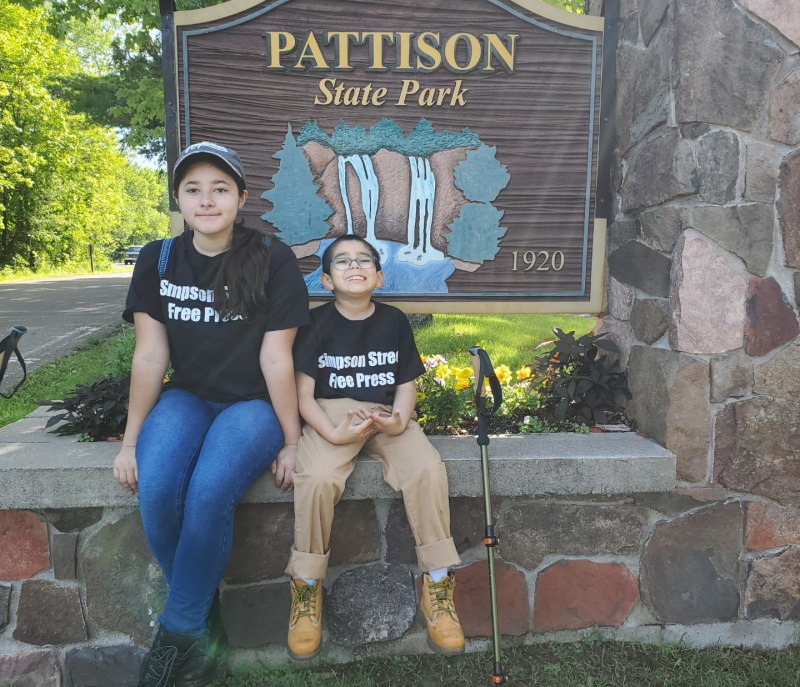
by Jazmin Becerril Gonzalez, age 13
On a warm Sunday this summer, my family and I went camping for three nights in Pattison State Park in Superior, Wisconsin to celebrate my birthday. This state park has the highest waterfall in Wisconsin, Big Manitou Falls, which is 165 feet tall. The park sits on 1,476 acres of land.
After a long car ride from Madison to Superior, we finally arrived at the park around three o’clock in the afternoon. My first impression of the campsite was that it was very well-kept and clean. There are 59 family campsites, some with electricity if needed. My family of four, plus our big dog, brought a two room tent to stay in.
There are approximately 54 species of mammals and 200 species of birds in the park. Reptiles and amphibians, like toads, frogs, and salamanders, also live there. I almost stepped on a snake that was small and green with little yellow stripes. It scared my whole family!
[read more]
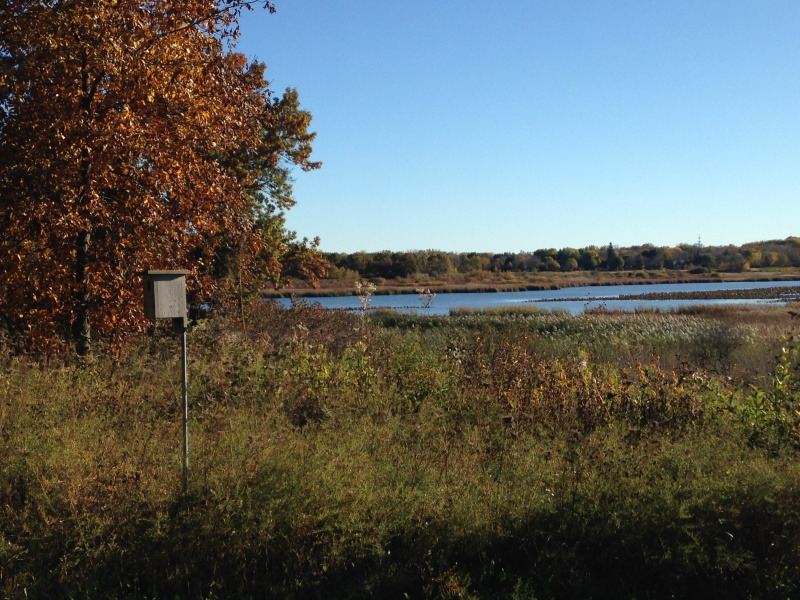
by Mariama Bah, age 13
Cherokee Marsh is home to a variety of flora and fauna that thrive in this unique and significant ecosystem. The marsh is also a very important part of Dane County’s natural environment.
Trees are especially scarce in marshes. Instead, these wetlands boast an abundance of herbaceous plants. Common plants at Cherokee Marsh include cattails, sago pondweed, and hard stem bulrush. This site also supports several rare plant species such as glade mallow, white ladyslipper, and tufted bulrush. Many mammals, reptiles, birds, and amphibians live in the marsh.
The animals and plants that thrive in Cherokee Marsh are a part of a precise and very special ecosystem. There are some invasive species, however, that threaten the native species at the Cherokee Marsh site. The Dane County Land and Water Resources Department (LWRD) has taken efforts to remove carp, which cause destruction by uprooting the aquatic plants and sediment.
[read more]
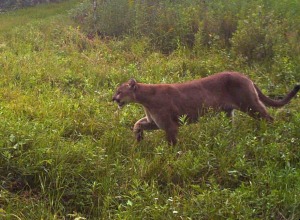
by Virginia Quach, age 17
Throughout recent years, cougar sightings in Wisconsin have occurred in over 17 different locations, suggesting that the feline is returning to Wisconsin’s landscape after more than a century gone.
In Brookfield, Wisconsin, a 50-pound cougar was spotted at the residence of Dan and Bridget Guerndt, where it was caught on surveillance peeking through a window; similarly, in Colgate, Washington County, a cougar was filmed roaming outside a home. Following these incidents, another resident spotted a cougar sitting under her pine tree, prompting her to contact local officials, where Agents of the Wisconsin Department of Natural Resources (DNR) later confirmed the cougar sightings and agreed to handle the situation immediately. However, by the time the DNR intervened, the cougar, which was identified to be a wandering one-and-a-half-year-old male, had disappeared.
From studies by the DNR, male cougars are shown to disperse farther than females, partly explaining why more male cougars have appeared in the Wisconsin area recently. Over the past six months, cougar appearances have drastically increased with at least two cougar sightings per year since 2008 in 17 different locations. Wildlife biologists predict that at least two cougars are currently roaming Wisconsin, perhaps more.
[read more]
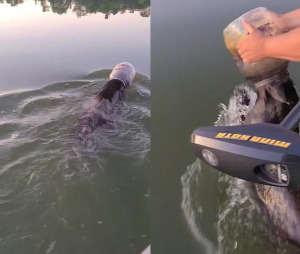
by Elim Eyobed, age 9
Plastic and garbage can hurt many animals, including young black bears. One Wisconsin family found a bear that had its head stuck in a plastic food container at Marsh Miller Lake in Chippewa County.
Thanks to Tricia Hurt, her husband Brian Hurt, and their son Brady, who happened to be fishing at the lake, the bear was saved. At first, they thought it was a swimming dog. They tried to pull the container off the bear’s head but failed the first attempt. After their second try, they succeeded in pulling the container off.
Brain Hurt said, “That was the thing I remember most, is that bear panting heavily, trying to get air. Can you imagine having that down in the water, it sealed it off so it couldn’t get fresh air into that jug?”
[read more]
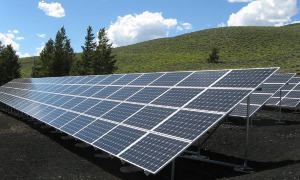
by Virginia Quach
Discussions about renewable energy are always critical topics here in Dane County. These issues are especially relevant in today as climate change and other global issues have sparked the need for more sustainable practices and alternative ways to produce energy.
At a local level, counties often take the lead toward a sustainable future. In fact, recent land purchases by Dane County are important steps for expanding and supplying renewable energy to our area.
Recently, Dane County purchased 120 acres of land east of the town of Cottage Grove to create a new solar farm. The county hopes to begin this new project in 2021. It’s part of a plan that will broaden the local availability and use of renewable energy. The purchased land includes 109 acres of farmland which was recently bought for $2.5 million along with an adjacent county-owned portion.
[read more]
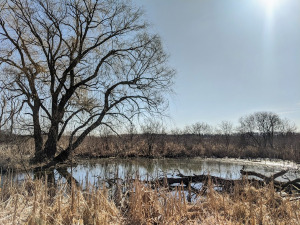
by Kadjata Bah, age 15
A Dane County land conservation group, Groundswell Conservancy, recently purchased 69 acres of wetlands in the Town of Dunn, south of McFarland.
Groundswell bought the property from Ken and Eileen Brost for $289,000 to supplement Dane County’s Lower Mud Lake Natural Resource Area. Funding for the purchase came from the Knowles-Nelson Stewardship Program, Dane County Conservation Fund, Town of Dunn, and supporters of Groundswell.
With the newly acquired land, Groundswell looks to promote public recreation, which goes hand-in-hand with their mission of wetland conservation and provides permanent habitat for resident wildlife.
[read more]
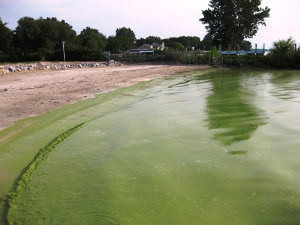
by Leilani McNeal, age 14
Eight Dane County beaches are plagued with algae blooms. Madison was forced to close its beaches for an extended period of time because of unsatisfactory health inspections. County Executive Joe Parisi and other civic leaders alike finally found an effective way of combating the algae blooms and nutrients.
The issue typically starts when legacy sediments, a phosphorus nutrient, streams down into the Yahara Chain of Lakes. To prevent any future concerns, Dane County purchased a 160-acre farm next to the Pheasant Branch Conservancy which should prevent about five million gallons of water from entering Lake Mendota yearly.
The city and county plan to use the “clean beach treatment system,” costing roughly $100,000. Starting at Warner Park beach next spring, this process will continue at the following beaches: Esther, James, Madison, Tenney, and Vilas.
[read more]
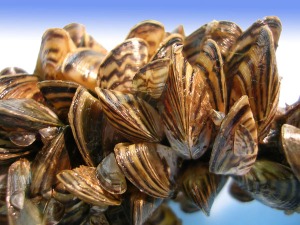
by Giovanni Tecautl, age 14
Do you know what is happening to our water bodies? Oftentimes unintentionally, boaters are starting to contaminate our waters with animals and plants that belong to foreign waters. As a boat travels, many small species stick to the bottom of the boat and to other boating equipment, bringing them to local waters. This is causing damage.
AIS, or aquatic invasive species, are plants or animals that do not belong in one lake and are brought to another lake by a boat and other boating equipment. AIS can spread rapidly. The Yahara Chain of Lakes is a popular cluster of lakes in the Madison area. They also serve as super-spreaders of AIS. AIS found in the Yahara Chain of Lakes include Zebra Mussels, Eurasian Watermilfoil, Spiny Water Fleas, and Curly Leaf Pond Weed.
AIS poses a threat to the health of our waters and fisheries. Once they are in a waterbody, they are difficult to control and often have no natural predators. For example, Spiny Water Fleas prey, a tiny crustacean from Asia and Europe has accidentally spread throughout our Great Lakes, preying on native daphnia. Daphnia is a zooplankton that consumes algae. With more Spiny Water Fleas, and therefore less Daphnia, there are fewer grazers to keep algae blooms in check. Having more algae is a major problem throughout Wisconsin.
[read more]

by Robert Tecpoyotl, age 13
Climate change is a continuing issue that impacts everybody. Scientists have looked at ways in which we can slow the process of climate change. One of these options includes energy powered by solar panels.
The largest battery currently deployed on the nation's power grid could possibly power 67,000 homes, stated a Wisconsin Public Service report.
Invenergy LLC is a leading private held, global developer and sustainable energy solutions operator. It has installed 3.15 megawatt batteries in West Virginia and Illinois, portraying most of the advanced storage portfolio capacity in the companies. In March, Invenergy LLC presented a design arrangement for a 300 megawatt sun-powered farm with a 50 megawatt battery segment.
[read more]
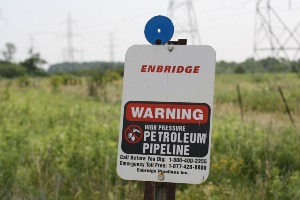
by Kadjata Bah, age 14
Enbridge Inc., a Canadian energy transportation company, is facing a federal lawsuit from the Bad River Band of Lake Superior Chippewa. Line 5, a 66-year old pipeline carrying 23 million gallons of oil daily, runs 12 miles through the nation’s Wisconsin reservation. This pipeline is likely to rupture, causing a massive oil spill in the Bad River ecosystem.
The Bad River Band had agreed for the pipeline to remain on its land under an easement established in the past. However, after Enbridge’s easements expired in 2013, the company continued to transport fossil fuels without the tribe’s permission. Enbridge argues most of the tribe’s land where the pipes are located is covered by a different 50-year old agreement that expires in 24 years, despite the perpetual risks of rupture. Enbridge is attempting to renegotiate easements with the tribe.
The soil supporting the pipeline is slowly being eroded by the Bad River. As the support is washed away, the pipeline is subjected to rupture due to its heavy weight and the possibility of being hit by falling objects.
[read more]
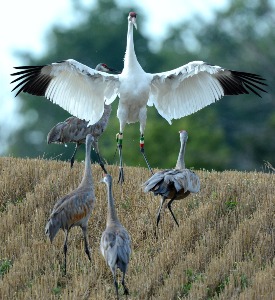
by Leilani McNeal, age 14
After 25 years, Operation Migration has come to an end. The nonprofit organization Operation Migration’s purpose was to restore the number of whooping cranes migrating to the southern United States from the eastern United States. Started in 2001, the organization receives whooping crane chicks hatched at captive breeding sites throughout North America. Today, more than 100 of these cranes migrate between Wisconsin and southeastern states.
“We raised the birds by hand. We wore costumes and didn’t talk in their presence. And they remained wild. But it was us they were looking to for guidance, and that’s what allowed us to lead them South,” stated Operation Migration co-founder and CEO Joe Duff.
Operation Migration initially cared for eight baby chicks in 2001; but in recent years, they received up to 20 annually. This is because of the national attention that was brought to the organization. The organization rose to fame for teaching chicks how to migrate from Wisconsin to Florida, guided by human pilots.
[read more]
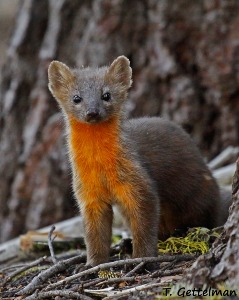
by Giovani Tecuatl, age 14
Have you ever heard of the American marten? Or, as it is also known, the American pine marten?
Martens are quite similar to the mink. They‘re around 20 to 27 inches long and weigh one and a half to three and a half pounds. Martens are long and skinny, with a brown back and a tail that is long and fluffy. Their faces are a lighter, almost pale color, and they have an orange or yellow, blond-like patch on their notably lengthy neck. They used to live in the northern forests of Wisconsin and have recently returned to the state. They are good climbers so they live in hollow trees and are often awake at night.
Martens hunt often. They are omnivores, meaning they eat both animals and plants. Some animals they eat include small rodents like the voles. They also eat rabbits, squirrels, birds, reptiles, and insects. The plants that martens eat include seeds and berries. The scent the animals make marks their territory. Once mating season is done in the summer, the male martens are aggressive towards each other.
[read more]
It is getting easier to see black bears in Wisconsin. It’s becoming more common to see black bears because their numbers in Wisconsin are growing. So, if you decide to go camping in our state, it's possible you could see a black bear roaming around.
[read more...]
About ten years ago, a bloom of cyanobacteria appeared in Lake Superior. Since that time, scientists have searched for answers as to why this problem occurs in this specific lake.
Lake Superior—bordered by Canada, Minnesota, Wisconsin, and Michigan—holds one-tenth of our planet’s surface freshwater. The largest of the Great Lakes of North America, Lake Superior is also the world's largest freshwater lake by surface area and third largest by volume.
[read more...]
Buying land is a major factor in protecting the environment. To that end, the Groundswell Conservancy, along with other conservation groups, recently made a major purchase with the intent of protecting Wisconsin's environment.
[read more...]
You should consider yourself lucky if you see a hummingbird, and especially lucky if they are close enough for you to hear them.
[read more...]
Not only are owls pretty to look at but they are important to the environment. Wisconsin is lucky to have just the right climate and pool of available prey to attract these fascinating creatures.
[read more...]
Have you heard of some of Wisconsin’s year-round birds? Today, I’m going to talk about the American Robin, Mourning Dove, and Song Sparrow.
[read more...]
In August 2021, spectaclecase mussels estimated to be over 100 years old were found by biologists working for the Wisconsin Department of Natural Resources (DNR), the University of Minnesota, and the National Park Service near the St. Croix Falls dam located in the St. Croix River. The U.S. Fish and Wildlife Service (FWS) has stated that in the past, these mussels—which can grow up to nine inches—were found in more than 44 streams across 14 states. Currently, this kind of mussels can be found in fewer than half the number of those streams in 11 states located primarily in the midwest and southeast.
[read more...]
The State Federation of Women’s Clubs sponsored studies on birds in public schools throughout late-1926 to mid-1927. The students chose to study robins and selected the bird to be Wisconsin’s state bird that year.
[read more...]
After two years of negotiation, the Conservation Fund (CF) of Wisconsin has purchased an estimated 70 thousand acres of forest land and named it the Pelican River Forest. The expected outcome is to preserve these lands for public use—such as hunting, fishing, trapping, and logging—and obtain easements to permanently protect them against development. This way CF can support the economy of the area while still providing protection for the forest.
[read more...]
Keep your eye to the ground and be careful when you’re walking in the Arctic Tundra, because you may find a snowy owl nesting site. Treeless, wide, hilly spaces are where snowy owls prefer to nest and hunt. purposes. These owls mainly eat small mammals, but their diet can range from rodents and rabbits to ducks and geese.
[read more...]
1.1 billion years ago, a mysterious rift, ranging from the depths of Lake Superior to present-day Iowa appeared. From the cracks of this rift, came oozing lava, hardening into a substance known as basalt. Over the next 500 million years, these natural occurrences worked in tandem with one another to support a sea of water which floored the entirety of this dark, gray material. The deposition of sand and silt from the sea led to the creation of sandstone and shale. Increased global temperatures promoted the shift of myriad glaciers across the state of Wisconsin, carving out the area’s famous potholes that are widely recognized today as the St. Croix Dalles.
[read more...]
Los científicos estiman que hay entre 50 y 430 mil millones de aves en la tierra, pero hay un ave específica que es bastante importante para Wisconsin, el halcón peregrino. Esta ave es aproximadamente del tamaño de un cuervo, tiene plumas negras en la cabeza, patillas, pico azul y patas amarillas. Puede volar hasta 200 millas por hora.
[read more...]
The discovery of Dichlorodiphenyltrichloroethane (DDT) led to its wide use as a pesticide in the 1940s and 50s. This successful scientific advancement, however, came with unintended consequences.
[read more...]
The Wisconsin Department of Natural Resources has placed Madison’s Lake Monona on the state’s list of polluted waters.
[read more...]
A $100,000 grant from the National Fish and Wildlife Foundation’s (NRF) Monarch Butterfly and Pollinator Conservation Fund is set to restore 1,837 acres of pollinator habitat across 12 state natural areas in southwestern Wisconsin. The land contains over a dozen at-risk pollinator species, including the regal fritillary butterfly, rusty patched bumblebees, and Karner Blue butterflies, which are all on the brink of extinction.
[read more...]
Desde 2015, los halcones peregrinos Trudy y Melvin anidan en el Blount Generating Center propiedad de Madison Gas and Electric (MGE). Tres polluelos nacieron en mayo y fueron nombrados y anillados el 3 de junio. MGE decidió ponerles el nombre de los barrios que los rodeaban cuando nacieron. El halcón macho se llamaba Willy, en honor a Williamson Street. Las hermanas de Willy, Jennifer y Brearly, recibieron el nombre de Jennifer Street y Brearly Street.
[read more...]
Scientists estimate there are between 50 and 430 billion birds on earth, but there is one specific bird that is quite important to Wisconsin, the peregrine (pair-a-grin) falcon. This bird is about the size of a crow, has black feathers on its head, sideburns, a blue beak, and yellow feet. It can fly up to 200 miles per hour.
[read more...]
Did you know that when cows burp or fart they release a gas called methane that is toxic for our atmosphere? When scientists added seaweed in small amounts to the diet of a group of cows, the cows showed a reduction in the release of methane.
[read more...]
Since 2015, peregrine falcons Trudy and Melvin have been nesting at the Blount Generating Center owned by Madison Gas and Electric (MGE). Three chicks hatched in May and were named and banded on June 3rd. MGE decided to name them after the neighborhoods that surrounded them when they were born. The male falcon was named Willy, after Williamson Street. Willy’s sisters, Jennifer and Brearly, were named after Jennifer Street and Brearly Street.
[read more...]
Did you know that when cows burp or fart they release a gas called methane that is toxic for our atmosphere? When scientists added seaweed in small amounts to the diet of a group of cows, the cows showed a reduction in the release of methane.
[read more...]
Looking for fun activities to do this summer? The Lussier Family Heritage Center may have just what you are looking for!
[read more...]
Wisconsin’s gray wolf population increased by 13 percent in one year according to a survey conducted by the Wisconsin Department of Natural Resources (DNR) between April 2019 and April 2020. This growth is attributed to the protections put in place by the federal Endangered Species Act in 1974. That rapid growth led to gray wolves being removed from the federal endangered species list in late 2020.
[read more...]
Are you interested in helping the local environment and learning more about native plant species in Wisconsin? If so, the Dane County Land and Resources Department has a fun and educational opportunity for you.
[read more...]
Over 1,200 gallons of petroleum were spilled from an underground pipeline leak near Fort Atkinson, Wisconsin, in Spring of 2019, yet regulators were not notified for nearly a year and a half.
[read more...]
Recent tests have revealed extremely high levels of dangerous contaminants called PFAS in the groundwater near former firefighting training grounds at the Dane County Regional Airport.
[read more...]
Alliant Energy plans on reaching net-zero carbon emissions by 2050, making it the largest solar energy generator in Wisconsin to make such a pledge. This has become a growing trend among other utility groups, with the goal to eliminate all coal-powered generators in the near future.
[read more...]
Chemicals that can be found in firefighting foam--and tools we use every day--heighten the risk for diseases like cancer. Due to this, Wisconsin has now started to limit the effect of these chemicals in our environment by restricting their use. New rules are being drafted by the Wisconsin Department of Natural Resources (DNR) to control their use and are expected to be put in place in September.
[read more...]
Many of us enjoy the local lakes here in Madison. But what people might not know is that our lakes are being invaded.
Zebra mussels are D-shaped mussels that can grow up to two inches in length. They usually have yellow and brown shells with stripes. This invasive species was first discovered in the Madison lakes in 2015 by a class of University of Wisconsin students, although evidence suggests the mussels were present in Lake Mendota as early as 2012. Since that time, zebra mussels have spread to other area lakes including Monona, Wingra, and Waubesa.
[read more...]
On a warm Sunday this summer, my family and I went camping for three nights in Pattison State Park in Superior, Wisconsin to celebrate my birthday. This state park has the highest waterfall in Wisconsin, Big Manitou Falls, which is 165 feet tall. The park sits on 1,476 acres of land.
[read more...]
Cherokee Marsh is home to a variety of flora and fauna that thrive in this unique and significant ecosystem. The marsh is also a very important part of Dane County’s natural environment.
Trees are especially scarce in marshes. Instead, these wetlands boast an abundance of herbaceous plants. Common plants at Cherokee Marsh include cattails, sago pondweed, and hard stem bulrush. This site also supports several rare plant species such as glade mallow, white ladyslipper, and tufted bulrush. Many mammals, reptiles, birds, and amphibians live in the marsh.
[read more...]
Dane County is testing a new technology designed to clean out algae blooms local lakes. Strange as it might sound, this new technology actually uses a vacuum to remove hazardous blue-green algae blooms located near Dane County’s beaches.
[read more...]
Four years. Five phases. Six sites. That’s the scope of the $10-15 million Yahara River Sediment Removal Project, part of Dane County’s ongoing flood mitigation effort. It is an ambitious project that aims to cut in half the amount of time it takes for water to travel through the Yahara watershed.
[read more...]
Dane County Parks staff and dedicated volunteers have been working hard to restore the natural landscape at Indian Lake County Park. This effort has improved and enhanced what is certainly one of the most beautiful spots in southern Wisconsin.
[read more...]
Discussions about renewable energy are always critical topics here in Dane County. These issues are especially relevant in today as climate change and other global issues have sparked the need for more sustainable practices and alternative ways to produce energy.
[read more...]
Dane County officials recently announced an important new land purchase in the Town of Verona. This will be the county’s largest conservation land purchase of 2020. The 160-acre acquisition adds to several other wildlife areas and natural resource areas near the Sugar River in southern Dane County.
[read more...]
In August of 2018, the chain of lakes connected by the Yahara River had remained above target summer maximum levels—the appropriate lake levels set by the Wisconsin Department of Natural Resources—for four months, despite efforts to eliminate blockages in the system. Heavy rainfall on August 21 threatened to push the lakes over the edge. The city of Madison closed major thoroughfares as the water rushed in, damaging homes, businesses, and public infrastructure. First responders worked all night, evacuating residents from flooded homes and rescuing stranded motorists.
[read more...]
Plastic and garbage can hurt many animals, including young black bears. One Wisconsin family found a bear that had its head stuck in a plastic food container at Marsh Miller Lake in Chippewa County.
[read more...]
A Dane County land conservation group, Groundswell Conservancy, recently purchased 69 acres of wetlands in the Town of Dunn, south of McFarland.
[read more...]
PFAS, hazardous chemicals found in Madison water wells and bodies of water, are in the news again. New revelations from a group called Midwest Environmental Advocates (MEA) show that Dane County and the Madison Water Utility failed to respond appropriately to open records requests filed in 2019.
[read more...]
Canadian pipeline company Enbridge will move forward with operating an oil pumping station in Waterloo, Wisconsin—without special insurance—after the Wisconsin Supreme Court ruled in favor of the company in a 4-1 decision, with two justices abstaining.
[read more...]
Today habitat loss and degradation is the number one cause of species extinction and loss of biodiversity across the planet. In particular, habitat fragmentation – the separation of habitat landscapes into isolated sections due to natural or human causes – has dramatically impacted the composition of environments and species survival rates. Despite this, a UW study has recently shown that habitat and species recovery is possible through the process of connecting habitat fragments.
[read more...]
New F-35 jets and industrial chemicals known as perfluoroalkyl and polyfluoroalkyl substances (PFAS) are making headlines in Madison, and in Japan. High levels of carcinogenic chemicals known as PFAS were found in the bloodto of Okinawa residents and in the rivers around the island’s two F-35-hosting U.S. air bases, according to a new study.
[read more...]
One man’s trash will be converted into another man’s fuel in a recently completed $29 million landfill biogas facility at the Dane County Landfill. The County works with a local contractor, BioFerm Energy Systems.
[read more...]
Access to renewable energy and fuel is a growing necessity in today’s world as concerns about global climate change rise. In an attempt to reduce local greenhouse gas emissions, Dane County plans to use a new process to convert gas from decaying/decomposing trash into fuel for vehicles.
[read more...]
Eight Dane County beaches are plagued with algae blooms. Madison was forced to close its beaches for an extended period of time because of unsatisfactory health inspections. County Executive Joe Parisi and other civic leaders alike finally found an effective way of combating the algae blooms and nutrients.
[read more...]
There is much to see in Dane County. Excellent museums, beautiful scenery, the state Capitol building, and the UW-Madison campus. In addition to its beautiful natural landscape, Madison has a rich and fascinating cultural landscape. We even have storm drains decorated with art.
[read more...]
The Dane County Land and Water Resources Department has done many projects that have helped reduce the number of invasive species. Staff work to prevent the invasive species from reproducing and keep their populations manageable. Their main goal is to keep invasive species in check, “in order to keep the integrity of the prairie intact”.
When non-native plants/animals are brought to a new area, they can quickly take over and change the ecosystem. When this happens they are considered invasive species.
[read more...]
The Dane County Land and Water Resources Department has run a grant program since 2005 that helps municipalities clean up their waterways. They have helped fund over 60 projects: stormwater ponds, where water acts as a trap for sediment flowing into larger bodies of water, dry depression ponds that hold water while raining, underground chambers that trap trash and large chunks of sediment, and other creative ideas to prevent sediment and urban runoff from getting into lakes and rivers.
[read more...]
The Dane County Land and Water Resources Department works hard to preserve and reinforce Dane County's historic, natural, and cultural resources. The Parks division manages over 12,000 acres of park lands in Dane County as well as hosts events such as yoga, Lil’ Explorers, and festivals. If you are interested in getting more involved with Dane County Parks there are volunteer opportunities that range from helping to maintain the parks to monitoring the animals that live within them.
[read more...]
On August 20th, 2018, Madison experienced its most dramatic flooding to date as a result of a rainfall in excess of 14 inches. This not only surpassed Wisconsin’s previous one-day storm record in 1946 of 11.7 inches, but it also exceeded the National Weather Service’s “1,000-year 24-hour rainfall” estimate of 9.9 inches.
[read more...]
Enbridge Inc., a Canadian energy transportation company, is facing a federal lawsuit from the Bad River Band of Lake Superior Chippewa. Line 5, a 66-year old pipeline carrying 23 million gallons of oil daily, runs 12 miles through the nation’s Wisconsin reservation. This pipeline is likely to rupture, causing a massive oil spill in the Bad River ecosystem.
[read more...]
The Midwest, especially the state of Wisconsin, is covered with thousands of ancient effigy mounds. From ground level, these mounds usually just look like small hills, but they were actually created by Native Americans hundreds of years ago. Some of these mounds are over 1,500 years old and can be over 100 meters in diameter. These mounds are usually made in the shape of an animal or human. It is believed that they were often built at the base of hills in order for the entire mound to be seen during construction.
[read more...]
Lead has been found in the water of homes in Columbus, Wisconsin. Since many residents may not know if their water is contaminated, it could be risky to consume.
[read more...]
Simpson Street Free Press always has its eyes open for interesting museum exhibitions, and now the Overture Center is about to open a showcase, “Phoenix from the Ashes,” in the Playhouse Gallery running from September sixth through October 27th.
[read more...]
Flooding isn’t one of Dane County’s biggest concerns, but there is certainly a risk.
[read more...]
With climate change posing a threat to human existence, many governments, both international and local, have pursued steps towards sustainable and renewable ways of living. Countless places across the United States have taken action to advocate for environmental practices that reduce the impacts of climate change.
[read more...]
Mosquito repellent typically contains two main chemicals: DEET and picaridin. However, a recent discovery found that using bacteria is much more powerful in terms of ridding mosquitoes.
[read more...]
Did you know that the Louisiana lobster is illegal to possess or transport in Wisconsin?
[read more...]
After 25 years, Operation Migration has come to an end. The nonprofit organization Operation Migration’s purpose was to restore the number of whooping cranes migrating to the southern United States from the eastern United States. Started in 2001, the organization receives whooping crane chicks hatched at captive breeding sites throughout North America. Today, more than 100 of these cranes migrate between Wisconsin and southeastern states.
[read more...]
Do you know what is happening to our waterbodies? Oftentimes unintentionally, boaters are starting to contaminate our waters with animals and plants that belong to foreign waters. As a boat travels, many small species stick to the bottom of the boat and to other boating equipment, bringing them to local waters. This is causing damage.
[read more...]
Have you ever heard of the American marten? Or, as it is also known, the American pine marten?
[read more...]
The emerald ash borer is a non-native invasive beetle from East Asia. It is infamously known for invading the precious ash trees in North America, particularly in Michigan and Wisconsin. It destroys the trees by disrupting the flow of nutrients below the bark.
[read more...]
Climate change is a very pressing issue in our world today. It happens when the climate changes abnormally due to too many fossil fuels being burned at once, releasing large amounts of carbon dioxide gases into the atmosphere. Due to climate change, the earth is slowing burning, causing problems like frequent powerful storms, animals dying off, and abnormal weather. To help stop climate change, the City of Madison has created a program to bring solar energy to communities in need. Solar energy converts energy from the sun into electricity.
[read more...]
Wisconsin is known nation-wide as the dairy state, producing daily quality dairy products such as milk and cheese. However, the practices and conditions in dairy and swine operations have recently sparked controversy as they have resulted in major effects on the water quality in the state.
[read more...]
Studies from the United Nations showed that 2015 was the hottest year ever recorded. The report came after a super El Niño elevated temperatures all around the world. However, this doesn’t solely apply to warmer weather. Recently, the winter of 2018-2019 had temperatures in the Midwest dropping as low as -55° Fahrenheit. These extreme weather conditions are effects of global warming and if not addressed, will have irreversible changes on the planet.
[read more...]
Climate change is a continuing issue that impacts everybody. Scientists have looked at ways in which we can slow the process of climate change. One of these options includes energy powered by solar panels.
[read more...]
PFAS, chemicals commonly found in non-stick cookware, water-resistant clothing, and firefighting foams among other things, have been found in 10 out of 19 Madison city wells tested. Though it is not a health threat at the levels detected, Madison Water Utility is making an effort to let people know what is in their water.
[read more...]
The water in Wisconsin has become a rising concern over the past decade. Governor Tony Evers recently announced that 2019 will be “the year of clean drinking water.” Even though the nitrate-infested wells and lead pipes will take decades to repair, Evers and his team are extremely passionate to tackle this issue.
[read more...]
What do animals do during the chilling months of winter in Madison to keep themselves warm?
[read more...]
The consumption and production of plastic goods have caused damage and destruction in many ways to the environment. Specifically, marine ecosystems and animals in these habitats suffer from the tons of plastic waste discarded into the oceans each year.
[read more...]
Porcelain berry, a vine native to East Asia, is moving into two neighborhoods on the West Side of Madison. The Department of Natural Resources (DNR) is looking to halt the invasive species before it spreads to other parts of the city.
[read more...]
“If we don’t act now, it will be too late.”
Threats like this have been circling the news and internet for years now concerning the imminent danger climate change poses to our planet. On October 8th, CNN declared that the “planet has only until 2030 to stem catastrophic climate change.” Each new ultimatum becomes more and more drastic--the action needed for change a steadily more ambitious task.
[read more...]
Did you know that the intense heat from fires can produce fire clouds?
[read more...]
On October 10, 2018, a public information meeting will be held by the Dane County Parks staff concerning the vegetation management of one of our many County Parks, Prairie Moraine County Park. The meeting will be open to the public and interested residents are encouraged to attend.
[read more...]
The Dane County UW-Extension (UWEX) Master Gardener Volunteer program educates people in Dane County on how to grow and take care of plants and other natural resources. People who volunteer in the program use the information they learn to enable them to answer residents’ questions about gardening through face-to-face contacts, phone calls or emails. Experts within the Master Gardener Volunteer program who can answer more specific questions are also available.
[read more...]
Native bee populations are declining. They are being threatened by urbanization and new farming techniques which can both poison the bees and harm their food source. Yet, there are ways that communities and individuals can help the bees.
[read more...]
Throughout recent years, cougar sightings in Wisconsin have occurred in over 17 different locations, suggesting that the feline is returning to Wisconsin’s landscape after more than a century gone.
[read more...]
When rainwater runs off the land and enters a storm drain, it often empties into a nearby body of water and remains untreated. This poses a problem because increased urbanization in Dane County is creating more runoff. Many surfaces in urban areas are either impervious or absorb very little water, like roads and traditional lawns. Before heavy development, natural land absorbed 80-100% of rainwater.
[read more...]
As summer comes to an end and days of water fun are over, it’s easy to forget about our lakes. A leaf management study conducted by the U.S. Geological Survey (USGS) suggests that fall is a crucial time of the year to take action.
[read more...]
Fruits, berries, nuts, and mushrooms abound in Dane County parks. Fragrant apples flourish in public orchards, luscious blackberries grow alongside hiking trails, delectable morel mushrooms thrive at the base of tucked-away trees, and so much more. The best part is, these tasty treasures are free and available to the public.
[read more...]
A group of homeowners, businesses, and lake users, called the Friends of Lake Kegonsa, are going helping to implement a carp removal project. The project aims to remove a large number of these fish from Lake Kegonsa. For the past year, the staff at the Department of Natural Resources (DNR) in Wisconsin have been following a cluster of 20 carp that were captured, tagged, and set free last fall. They hope that if they follow the carp they will discover the migratory patterns of this invasive species.
[read more...]
After 30 years of planning, the Lower Yahara River Trail will soon be open to the public. The highly anticipated trail will connect McDaniel Park in McFarland with Capital City Trail in Madison. It does more than just bridge two places; however, it will also tie two communities together.
[read more...]
Wisconsin is ready to handle U.S. Environmental Protection Agency's upcoming pollution standards according to two environmental groups. In fact, Wisconsin has been doing so well that the state’s proposed carbon dioxide levels for 2030 are 30 percent below what they were in 2005.
[read more...]
In Flint, Michigan, people have unwittingly ingested lead-infused water due to a change of water sources. But how do they find out where people are getting poisoned and who has lead in their blood?
[read more...]
Can you think of a bird that makes you stop in your tracks just to admire it? The bald eagle is that bird, and our nation's symbol.
[read more...]
The Wisconsin State Assembly recently voted to lift a restriction on nuclear power production in the state. Assembly Bill 384 now goes to the Senate. Democrats and Republicans alike support the bill.
[read more...]
A team of UW-Madison researchers tailing coyotes and foxes in the City of Madison has made a surprising discovery—the two rival canids have made amends.
[read more...]
Plastic is a substance that has contaminated bodies of water, endangered wildlife across the globe, and fascinated humans since the 1950’s. In fact, in fewer than seven decades, humans have produced 8.3 billion metric tons of plastic. Half of this production since 2004.
[read more...]
Wisconsin rivers are threatened, not only because of run-off but also invasive species. Invasive snails and the parasites they carry have recently been added to the list because of the harm they pose toward people and animals.
[read more...]
Two Midwestern energy companies plan to shift towards renewable resources.
The Lacrosse-based Dairyland Power Cooperative plans to build the first Wisconsin wind farm since 2011. The farm will be located 20 miles southeast of Platteville and construction is projected to begin in 2017. While operating, the turbines would generate enough electricity to power more than 25,000 Midwestern homes.
[read more...]
Water pollution is unarguably one of Wisconsin’s biggest environmental problems. The state prides itself on clean lakes and rivers, yet many Wisconsinites are appalled at the findings in a recent report by the Department of Natural Resources (DNR). In a report, the DNR disclosed Wisconsin’s inability to enforce laws protecting drinking water due to a number of pollutants contaminating lakes and rivers. The pollutants are generated by concentrated animal feeding operations, also known as CAFOs.
[read more...]
Did you know that the four lakes of Wisconsin were created by glaciers?
Glaciers are huge sheets of ice. Madison was once covered by a glacier as tall as five Capitol buildings stacked on top of each other. Each year, the glacier moved forward, pushing tons of sand and gravel, changing the landscape as it moved.
[read more...]
Dane County Executive Joe Parisi announced recently that local benefactor Stephen Morton donated 114 acres of forestland to Dane County Parks. Located in the Black Earth/Mazomanie area, the newly-unveiled Morton Forest illuminates many scenic views including the Blue Mound, which is the biggest hill in southern Wisconsin.
[read more...]
The DNR states that the mission of Wisconsin state parks is “to protect and enhance our natural resources...to ensure the right of all people to use and enjoy these resources in their work and leisure… and in this partnership consider the future and generations to follow.” Unfortunately, these goals may become less attainable with Governor Walker’s recent proposal to eliminate tax support for the state park system.
[read more...]
Because of the Clean Air Act of 1970, Wisconsin has some of the cleanest air in the world, said Tracey Holloway, University of Wisconsin-Madison environmental studies professor. To monitor the chemicals in the air, NASA launched the Health and Air Quality Applied Sciences Team, led by environmental studies professor Holloway. Staffed with experts from prestigious institutions across the nation, their project aims to make environmental satellite data more accessible to people around the world.
[read more...]
Recently, Simpson Street Free Press staff and students had the remarkable opportunity to meet and talk with Hip Hop Caucus CEO Reverend Lennox Yearwood at the Wisconsin League of Conservation Voters’ 15th anniversary celebration.
[read more...]
Dane County Executive Joe Parisi announced recently that $2 million is available in the Urban Water Quality Grant Program for 2017. This is welcome news to county residents seeking to halt the flow of local water pollutants.
[read more...]
The Wisconsin League of Conservation Voters will celebrate its 15th anniversary on June 8. A non-profit, non-partisan organization “dedicated to electing conservation leaders, holding decision makers accountable, and encouraging lawmakers to champion conservation policies that effectively protect Wisconsin’s public health and natural resources,” the League will celebrate a decade and a half of advocating for the state’s water, land, and air.
[read more...]
From wetlands to prairies, a diverse range of biomes contributes to the preservation of natural resources and wildlife in Wisconsin. Climate change, prairie loss, and deforestation have reduced some of the state’s richest sources of species diversity over the last couple of decades.
[read more...]
The McCarthy Youth & Conservation County Park is a spacious park in Cottage Grove that offers many activities for families and friends to enjoy. The park’s 285 acres of land features equestrian trails, hiking trails, camping sites, sledding hills, snowshoe trails, cross-country ski trails, picnic areas, and archery areas.
[read more...]
For many Wisconsinites, summer means enjoying the thousands of lakes sprinkled across the state. However, the spread of invasive species can heavily damage these waterways, and even endanger visitors.
[read more...]
From car seats to cosmetics, you probably use foam products every day. But did you know that commercial foam is fabricated right here in Madison, Wisconsin?
[read more...]
For the first time, the Dane County Parks Division has developed a survey as an added outreach effort to get citizen input on their Parks and Open Space Plan. Every five years, the Parks Division updates the plan, but this year they will administer a survey of Dane County residents in English and Spanish. The feedback from the survey will be considered to design the 2018-2023 plan.
[read more...]
The Simpson Street Free Press interns for the Dane County Land and Water Resources Department recently had the chance to attend a teaching workshop at the UW- Madison Arboretum. It was hosted by the Latino Earth Partnership, an organization that works to promote collaboration between educators and Latino communities.
[read more...]
Human activities such as farming, fishing, and forestry have existed for thousands of years. Although these activities have benefitted the growing population and economy greatly, practices within these areas have damaged the Earth’s environment significantly and continue to have a negative impact today.
[read more...]
At exactly 10:30 am on a Thursday morning we welcomed Steve Ottelien into our office at the Dane County Land and Water Resource Department for an interview. This friendly, approachable man had agreed to talk to us about his job as a soil and water conservationist.
[read more...]
Most buildings nowadays are made of metal. However, the new Festival Foods located on East Washington Avenue took advantage of another organic material: ash and red pine trees.
[read more...]
The Rosemary Garfoot Public Library is a central gathering place and a source of information for the Cross Plains community.
[read more...]
The Menominee people are some of Wisconsin’s oldest residents and have practiced sustained-yield forestry on their lands for hundreds of years. However, due to laws and treaties set by the United States, the Menominee have had to fight to regain control of their forests.
[read more...]
Over the past year, Wisconsin has revised dozens of permits for high-capacity wells, allowing for an additional billion gallons of groundwater to be extracted. Recently, Wisconsin legislature passed a bill essentially removing the Department of Natural Resources' permit checks when wells are repaired, rebuilt, or transferred.
[read more...]
Everyone has heard terrifying stories of tsunamis, hurricanes, and earthquakes. Have people ever paid attention to what scary and destructive things tornadoes can do? There have been many unforgettable moments brought by the worst tornadoes in the American Midwest.
[read more...]
According to a recent press release, Clean Wisconsin, a nonprofit organization that advocates for clean air and water, and the Wisconsin Farm Bureau released a statement addressing the recent policy updates to Natural Resources 151 (chapter 151 in the Wisconsin State Legislature). These updates are aimed at protecting the drinking water in Northeast Wisconsin and were implemented by the Department of Natural Resources.
[read more...]
The issue of lead in Wisconsin water is critical and widely recognized. However, the debate continues regarding who is financially responsible for repairing lead pipe lines. Recently, a bill was proposed in Wisconsin legislature that would require local water utilities to offer low and no-interest loans and grants to low-income families seeking to replace their service lines.
[read more...]
Due to its abundance of fertile land and natural resources, the United States was always destined to be a leading agricultural nation, and as time passes, the value of farming continues to increase. According to the American Farm Bureau Federation, in the United States, about 15% of the workforce is employed in agriculture related careers and between 2010 and 2015, and an estimated 54,000 jobs for college graduates were created annually in the agriculture, food, and renewable resources sectors. Considering the importance of agriculture jobs - especially in Wisconsin, the dairy state - encouraging interest in agriculture at MHS could be a valuable and rewarding investment.
[read more...]
One effective way to conserve is to spread awareness about environmental issues. We at Simpson Street Free Press know this well and emphasize energy and environment topics in our curriculum. Members of the Wisconsin chapter of The Nature Conservancy (TNC) recently visited our South Towne newsroom to present a panel around the theme “Conservation and the Environment.”
[read more...]
At the University of Minnesota (UM) in Dakota County, agricultural researchers set up an eight- armed drone to send 200 feet in the air to begin its task. The drone is on the front line of their scientific explorations. Scientists at the UM are testing low-flying drones for their ability to find aphids, a grasshopper-like bug that ravages plants in the Upper Midwest.
[read more...]
Native plants are an important part of our ecosystem due to their many benefits, but their numbers are quickly dwindling. A new program by the Land and Water Resources Department aims to encourage more native gardens around Dane County. The program, called Plant Dane, is growing and offering free native plants to schools and community centers. Native plant gardens can be quite costly due to the high price of native plants. By offering free plants from the county, schools and communities that previously didn't have the money to create a garden now can.
[read more...]
Turkeys were hunted and pushed out of existence by humans in Wisconsin in the late 1800s. However, in 1976 they were reintroduced and are now thriving.
[read more...]
European settlers such as Frank Hudson gave the Yahara Lakes beautiful Native American names. Lake Monona, Lake Mendota, Lake Kegonsa among other lakes are well-known to Madison residents; but many do not know why the settlers chose such a specific style of names.
[read more...]
In past decades, the variety of both native and non-native species in Lake Michigan has changed and complicated its waters. Recently, the presence of mussels has created clearer lake water. Though seeming advantageous, it has harmed the Great Lakes environment and the people using it.
[read more...]
Asian carp first were introduced in American 1970’s as a cleaning fish for commercial fish ponds in the South. They escaped into the Mississippi River during a flood and have since spawned rapidly and spread quickly. Since then, Asian carp have been a controversial subject in America.
[read more...]
Blue-green algae is a problem that plagues many beaches in Dane County. Too much exposure to this bacterium can lead to high risks of health issues such as sore throats and rashes. The toxic algae flourish in Dane County’s phosphorus-rich lakes decreasing water quality and resulting in beach closings. John Reimer, a civil engineer and assistant director of the Dane County Land and Water Resources Department, is using new technology to keep the beaches clean and closings at bay while Dane County and local partners work towards long-term water quality improvement.
[read more...]
What are snakeheads? A snakehead is an invasive fish with a cylindrical shape and sharp teeth. An invasive species is a non-native organism that can harm an ecosystem. Snakeheads are separated into two genera: parachanna and channa. They are native to various parts of Africa and Asia; however, in 2002, the northern snakehead was caught in a Maryland pond. This immediately gained national attention and indicated that snakeheads were reproducing around the Maryland-Virginia area as well as in other states such as Wisconsin, Maine, Florida, as well as along the east and west coasts.
[read more...]
Crazy worms are taking over our forest floors, and we’ve got to do something about them.
[read more...]
American Martens are one of Wisconsin's rarest endangered species. They are small in size and look very similar to fellow members of the weasel family. In fact, they often get confused with Fishers and Stone Martens who also live in Wisconsin. American Martens are slowly disappearing; this is a problem on the rise that needs to be addressed.
[read more...]
In April, two adult gorillas died at the Milwaukee County Zoo in Southeastern Wisconsin. Investigators recently determined that their cause of death was an E. Coli contamination in drinking water.
[read more...]
Wetlands are a major factor in Wisconsin's ecology; however, we are treating our environment so badly that we are causing wetland loss at alarming rates. It has taken the state thousands of years to form approximately ten million acres of wetlands, but it has taken less than 200 years for humans to ruin these vital landforms.
[read more...]
The city of Waukesha, west of Milwaukee, faces water problems. In the 1980's, Waukesha had to stop drawing water from a 2,200 foot-deep aquifer that paralleled Lake Michigan. This overused aquifer had quickly rising levels of radium and sodium in the water being pumped to the surface. The city decided to open a treatment plant to remove the radium which can potentially cause cancer of the bone, liver, or breast. The idea to extract water from Lake Michigan was proposed.
[read more...]
Two chemicals, perfluorooctanoic acid (PFOA) and perflurooctane sulfonate (PFOS), have been found in groundwater near Marinette, Wisconsin. Wisconsin's Department of Natural Resources is currently working on setting new parameters for acceptable levels of these chemicals in drinking water. PFOA and PFOS have been used since the 1950’s to make non-stick cookware, carpet cleaner, and stain repellant.
[read more...]
Wisconsin is struggling with lead poisoning among children; however, children lead-poisoning cases are opening in Milwaukee. A troubling report reveals that Milwaukee's lead-poisoning prevention program has not been taking the most basic of steps to protect its youth.
[read more...]
Plum and Pilot Islands, two small islands off the Door County coast had been apparently fading into the background of local people's daily lives for decades. However, in 2007 with the creation of Friends of Plum and Pilot Islands, a non-profit formed by local citizens, the fortunes of the islands began to change.
[read more...]
A recent emerald ash borer outbreak has affected thousands of trees across Wisconsin. Many of the infected Ash trees need to be cut down. Madison Community Foundation recently helped launch a project to bring life back into the dead trees.
[read more...]
The future is getting brighter for wind and solar energy in the Midwest. Two Madison-based power companies, Alliant Energy Corporation and Madison Gas and Electric (MGE), have recently invested in clean energy sources that will affect thousands of customers across the Midwest.
[read more...]
Set to begin summer of 2018, Madison Area Technical College will be adding a new feature to their campus. The largest rooftop solar system in Wisconsin will be implemented on top of the main Truax Campus building. Through a cooperation between Madison Gas and Electric, the program will bring alternative energy sources and new education opportunities to the Madison community.
[read more...]
The Milwaukee Health Department has faced scorn in the past about their cursory disregard of the city’s lead poisoning problem. It is estimated that 70,000 homes in Milwaukee currently have lead service lines. That number represents about 46% of all residences.
[read more...]
On a chilly and cloudy morning, we took a trip to Lake Farm County Park, a section of the Capital Springs Recreation Area, to take a tour of the property and the new Lower Yahara River Trail. The Lower River Trail includes a new boardwalk bridge that stretches over Lake Waubesa, connecting Madison to McFarland. The total distance of the trail is 2.5 miles, and the bridge itself is an impressive mile long. The boardwalk bridge is fully accessible and features fishing piers and scenic outlooks. At the end of the bridge, the tranquility of McDaniel Park awaited us.
[read more...]
Dane County recently acquired interest in 130 acres of land along the Yahara River near the Cherokee Marsh, north of Madison, for $1.5 million. Improving lake water quality and offering new recreational opportunities, this expansion of the Cherokee Marsh Natural Area Resource could benefit the Madison community.
[read more...]
Tensions are rising as lawmakers, environmentalists, local residents and sponsoring companies continue to debate plans for the new Cardinal-Hickory-Creek transmission line. Although project advocates boast the proposed project will provide low-cost and renewable energy, the line poses potential health risks for residents of southern Wisconsin and threatens the surrounding environment.
[read more...]
El sendero del río Yahara, Yahara River Trail que es parte del sistema de parques del condado de Dane, continúa avanzando y expandiéndose. El sendero conecta el parque McDaniel en McFarland con el sendero Capital City Trail en Madison, y con la red de senderos recreativos en la parte sureste del condado de Dane.
[read more...]
The Yahara River Trail, part of the Dane County park system, continues to move forward and expand. The trail connects McDaniel Park in McFarland with the Capital City Trail in Madison. It also connects local recreational trail systems with the southeastern part of Dane County.
[read more...]
The United States Army Corps of Engineers (USACE), recently predicted that the Great Lakes water levels will rise again this spring for the fifth year in a row.
[read more...]
After the Flint, Michigan water contamination crisis that left Flint residents without clean water for months, Wisconsin is taking steps to help homeowners pay for lead water pipe replacements.
[read more...]
A plan to prevent Asian carp from invading the Great Lakes is in hot water. Recent plans to protect the lakes is meeting opposition from both the Trump administration and some Great Lakes states, despite the support of environmentalists.
[read more...]
Just south of Madison, there is a problem with Rock County’s wells. Contaminated water is posing a serious threat to the health of those who live there. The culprit—nitrate.
[read more...]
Controversy and concern over lead pipes and safe drinking water is exploding in Milwaukee.
New reports in the
Milwaukee Journal Sentinel
and elsewhere show city leaders knew about the situation at least three years ago and delayed taking action. Now citizens and a concerned public are calling lead contamination in the city a “public health crisis.”
[read more...]
In 1998, the aquifer (a reservoir of water located deep underground) under the Madison area dropped to 130 feet, an all time low since when experts began monitoring water levels in the 1930’s. This worried many experts.
[read more...]
The Wisconsin Conservation Corps was a work program aimed at helping public or tribal lands in the state. The program employed more than 11,000 young people during a 20-year run, until it ended. It was eliminated in 2003 by Democratic Governor Jim Doyle and GOP lawmakers due to a 3.2 million dollar budget deficit faced by the state.
[read more...]
Por primera vez, la división de parques del condado de Dane ha desarrollado una encuesta como un esfuerzo añadido para obtener aportes de los ciudadanos en su Plan para Parques y Espacios abiertos. Cada cinco años la división de parques actualiza su plan, pero este año realizará una encuesta para los habitantes del condado de Dane tanto en inglés como en español. Los resultados obtenidos de la encuesta serán considerados para diseñar el plan para el periodo de 2018-2023.
[read more...]
The sound of a buzzing bee is seemingly a simple sound we hear on the average summer day, a sound we often pay no mind. But for bees, buzzing has a vast importance.
[read more...]
Last Thursday, I paid a visit to the Jenni and Kyle Preserve, a Dane County Park with a positive mission. Specially designed for people with disabilities, the park is fully accessible to ensure a fun outdoor experience for all.
[read more...]
Mary Kolar, District 1 Supervisor and member of the Dane County Lakes and Watershed Commission, and I recently sat down with James Mills discuss local water issues. He spoke articulately and passionately about his work, the environment, and his perspective on water.
[read more...]
In an effort to reach underserved young people and diversify their pool of applicants, Edgewood College recently created a program that would encourage diversity among its college students. To learn more about this program—the “Edgewood College Math Precollege Program”—Simpson Street Free Press reporters interviewed Steven Post, professor of Mathematics at Edgewood.
[read more...]
Recently, a sandbox was installed at the Henry Vilas Zoo. But it’s not just any sandbox. It is an Augmented Reality (AR) sandbox that simulates topographic features and water systems to teach people about watersheds. The Dane County Land and Water Resources Department and the Henry Vilas Zoo partnered to construct this educational model for all ages to view.
A
watershed
is a piece of land that drains precipitation into a body of water. The exhibit at Vilas will help citizens of Madison understand how watersheds work. The model also aims to make viewers more aware of where water goes when it runs off their yards and driveways into storm drains, lakes, and streams.
[read more...]
Wisconsin will face $7 billion in wastewater infrastructure and drinking water needs over the next 20 years, according to a recent report from the American Society of Civil Engineers.
[read more...]
Michelle Richardson came into our office with a smile on her face and a map in her hand. She is the GIS Analyst at the Dane County Land and Water Resources Department. We spent the morning discussing her career, personal life, and experiences working at the department. She was very kind and conversational, asking us about our school and lives.
[read more...]
Over the years, invasive species have made a home in the Mississippi River. But it seems that the Asian carp has yet again found its way into a Chicago waterway that is nine miles from Lake Michigan. It was caught below T.J. O’Brien Lock and Dam by a commercial fisherman working with the Illinois Department of Natural Resources. This is not the first time an Asian carp has snuck through the three electrical barriers, which are located in the Chicago Sanitary and Ship Canal. In 2010, a bighead carp was caught in Lake Calumet.
[read more...]
Last Tuesday, we sat down with Seth Ebel, a thirty-something civil engineer at the Dane County Land and Water Resources Department. He has the air of a pragmatic idealist: passionate and motivated, yet down-to-earth and committed.
[read more...]
A tiny creature is making a big splash in Dane County. The New Zealand mud snail was detected for the second time in the area, and officials are becoming concerned about the invasive mollusk. First discovered three years ago in Black Earth Creek, the snail was recently sighted in Badger Mill Creek in Verona.
[read more...]
Gray wolves, a mighty canidae species that roam the vast territories of North America, are currently facing an uncertain future.
In 2012, the U.S. Fish and Wildlife Service (USFWS) and the U.S. Department of the Interior (USDOI) removed the federal protections for gray wolves in the Western Great Lakes region. They argued that the roughly 6,000 wolves that lived in the region constituted a large enough population for the species not to need protection. With federal protections lifted, states took on the responsibility of managing wolf protections and hunting laws. States such as Minnesota and Wisconsin immediately authorized hunting. In the hunting season immediately following the lifted regulations, hunters in these two states killed a combined total of 530 wolves. The same season, Michigan legislature voted to authorize wolf hunting, beginning the following fall.
[read more...]
Milwaukee residents are concerned that lead may be poisoning their water. According to a 2014 report, over eight percent of children tested in the city had blood levels at or above the level indicating lead poisoning. This figure is significantly higher than it is for individuals in Flint, Michigan. An increasing number of Milwaukee citizens are concerned that not enough has been done to address this issue.
[read more...]
Solar power has taken Wisconsin by storm. In 2015, the state’s installed solar capacity grew by 94 percent and powered more than 3,800 homes. As demand for solar panels has risen, so have associated costs. Recent changes to large-scale energy company’s billing provisions, like We Energies, have made solar power much more expensive.
[read more...]
A recent discovery from a Dane County study found that targeting residual sludge might be the key to mitigating phosphorus pollution in the waterways of southern Wisconsin. This has spurred immediate action by the county, and a new plan by Dane County Executive, Joe Parisi may make waves in Wisconsin environmental efforts.
[read more...]
Since the water crisis in Flint, Michigan, the issue of lead-contaminated water and lead pipes has gained renewed attention. Since then, many states, including Wisconsin, have taken action to replace the lead water pipes still in use by schools, homes, businesses and other facilities.
[read more...]
Wisconsin has a long running history with timber wolves, also known as gray wolves. Since 1960, their population has varied significantly.
[read more...]
|
|

